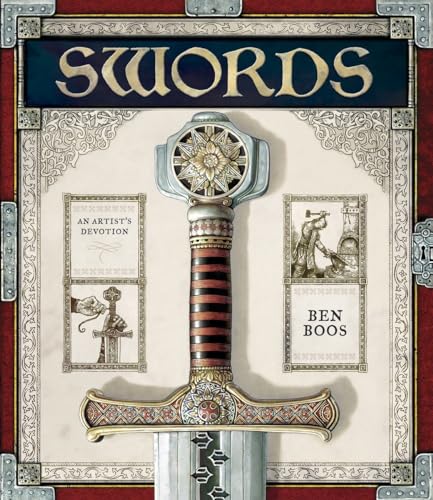List of the Most Famous & Important Swords in History [Updated]
Swords have been one of the most important and enduring weapons in world history. Regardless of the time and place, swords of all styles have featured in battles, coronation ceremonies, and other significant events through the centuries.
It can be difficult to separate fact from fiction when studying famous swords from ancient and medieval history. Most of the famous swords on this list have a long history of legend and poetry to accompany them.
Because of this, we have included both the hard facts and some legend to provide a complete picture of each sword.
Here’s our round-up of the most important and influential swords in world history.
1) Zulfiqar Sword
(7th century, Middle East)

The Zulfiqar sword was a scimitar given to Ali ibn Abi Talib by the Prophet Muhammad, according to Shi’ite tradition. Talib was the son-in-law of Muhammad and Caliph from 656 to 661.
Like other scimitars, Zulfiqar would have had a curved blade of medium size. The sword is a symbol of the Islamic faith and featured on flags of the Ottoman Empire. It was also a symbol of the Janissaries, who were the standing army of the Ottoman Empire.
When depicted on flags and in artwork, Zulfiqar has a scissor-like blade instead of a single blade.
2) Sword of Goujian
(Spring & Autumn Period, China)

The sword of Goujian was created during the Spring and Autumn period of ancient Chinese history, between 771 and 476 BC. The sword was made for Emperor Goujian and is today known as the “Oriental Excalibur.”
This weapon is significant because of its near-perfect condition upon excavation. In 1965, a team of archaeologists uncovered the sword of Goujian. Although it dated over 2,000 years old, the sword was untarnished and retained its original sharpness.
The rare condition of the blade and the intricate nature of its design makes this sword one of the most significant archaeological discoveries of the period.
3) Tizona Sword
(11th century, Spain)

The Tizona sword was forged around 1002 and belonged to the legendary Castilian noble and fighter El Cid. He wielded Tizona in many battles against the Moors. The sword saw so much battle that it featured in the Song of El Cid, a medieval poem telling of his many exploits.
Because of its rich history as the sword of El Cid, Tizona remains one of Spain’s most valuable national treasures.
4) Sword in the Stone of San Galgano
(12th century, Italy)

Most history buffs and sword enthusiasts will know the legend of the sword in the stone, in which Arthur pulls Excalibur from a stone and becomes the king of Britain.
While that story remains a legend, there is a real sword in the stone in the Tuscany region of Italy, and it is known as the Sword in the Stone of San Galgano.
Historians consider this sword to be the “Real Sword in the Stone,” as the blade is embedded in a boulder near the Cisterian Abbey.
The sword is thought to have been placed there by Galgano Guidotti, a knight who would become the first saint in Italy to be formally canonized by the Roman Church.
The sword remains in the stone to this day and can be visited.
5) Joyeuse
(8th & 9th centuries, France)

Joyeuse is the famous sword of Charlemagne. The fierce Frankish leader wielded this weapon in the 8th and 9th centuries in what is now modern day France.
The story of Joyeuse is mixed with legend, but we do know that a sword thought to be Joyeuse was used from the 13th century onward as the official sword of coronation for French kings.
A sword that is thought to be Joyeuse currently resides in the Louvre in Paris. While its various parts date to different centuries, the blade of the weapon can be dated to the 9th or 10th centuries, and therefore may have been part of the original Joyeuse wielded by Charlemagne.
6) Durandal
(8th & 9th centuries, France)

Another sword of French history and legend is Durandal. This sword belonged to Frankish military leader Roland, a contemporary of Charlemagne.
Durandal and its owner Roland feature heavily in epic literature of medieval France. The might of the sword is described in mythological proportions in the Song of Roland.
The power of Durandal allegedly comes from the holy relics it is made from. The sword is said to feature a scrap of the robe of St Mary, St Denis’s hair, St Peter’s tooth, and St Basil’s blood.
A sword that may be Durandal can be seen today in Rocamadour, France. The sword is stuck in a cliff face, where Roland threw it, according to legend.
7) Sword of William Wallace
(13th century, Scotland )

William Wallace was a knight and symbol of Scottish independence in the late 13th century. He remains one of Scotland’s most important and iconic historical figures.
This national hero’s sword is one of the most famous and legendary in medieval European history because of the battles it was used in. Wallace fought the English in the Battle of Stirling Bridge and the Battle of Falkirk during the First War of Scottish Independence.
The National Wallace Monument showcases a sword that is said to be the sword of William Wallace. It is a medieval longsword measuring 5 feet, 4 inches.



What about the Go sword from Japan.
I know someone have one